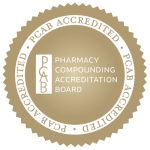In a podiatry practice, onychomycosis is one of the most common conditions seen and treated.
According to statistics, onychomycosis accounts for one third of the integumentary fungal infections and one half of all nail disease. It occurs primarily in adults, most commonly after 60 years of age. It is easy to imagine within this age category that many patients will have other medical conditions as well.
Onychomycosis may not seem to be a serious health concern, but rather an embarrassing cosmetic problem. However, it rarely affects a healthy person. In many cases, it is present in patients with weakened immune systems, where corroborating factors facilitate fungal growth under the nail bed.
Onychomycosis may indirectly decrease peripheral circulation because it can sometimes limit mobility. It can worsen conditions such as venous stasis and diabetic foot ulcers. Fungal infections of the nails can also be spread to other areas of the body and in certain circumstances from person to person.
The most common form of the infection is distal subungual onychomycosis. Some degree of tinea pedis is almost always present. The infection is usually caused by Trichophyton rubrum.
Therapeutic options are wide due to recently developed drugs available on the market. Yet, the failure rate is still high. Many efficacious approved drugs are available in oral form, however they require months of treatment, frequently have serious side effects, and often interact with other drugs. Terbinafine, Itraconazole and Fluconazole are the top three recommendations for distal subungual onychomycosis.
These treatment options are not always viable because the category of patients prone to this kind of infection are usually at an advanced age or have other health conditions requiring medications that are often contraindicated with these antifungal drugs. For most patients, topical products in powder or cream dosage form have been tried unsuccessfully.
Pharmaceutical compounding brings hope and help for these patients. Developments in delivery systems have allowed experienced compounding pharmacists to create viable therapeutic options that have greatly helped patients with onychomycosis. Topical formulations containing various antifungal active pharmaceutical ingredients (API’s), in various strengths, combined or by themselves and an organosulfur chemical compound called – DMSO or Dimethyl Sulfoxide as a vehicle for application. DMSO is a powerful penetration enhancer and an anti-inflammatory compound. When it is used as a base that incorporates the needed API’s, it penetrates the nail bed instantaneously and transports the API’S to the site of fungal infection. This liquid base allows podiatrists to work collaboratively with compounding pharmacists in creating customized topical treatment medications for patients with onychomycosis without concerns for side effects that can be caused by oral medications. Here an example of a customized formulation for onychomycosis:
Fluconazole 4% Itraconazole 1% Terbinafine 4% in DMSO Solution
Apply to affected nail(s) q12 hours as directed
For many other personalized therapeutic solutions for your podiatry patients with other conditions, you must select and work with a reliable compounding pharmacy. Choose one that is trustworthy, has the credentials to prove its high standards and ethical practices, with experienced compounding pharmacists that can help you with innovative solutions when you need them
Choose HALDEY Pharmaceutical Compounding. Call us to learn more about us and how we can help you help your patients
References:
Lesher JL. Recent developments in antifungal therapy. Dermatol Clin. 1996;14(1):163–9[Published erratum appears in Dermatol Clin 1996;14(4): xii].
Ling MR, Swinyer LJ, Jarratt MT, Falo L, Monroe EW, Tharp M, et al. Once-weekly fluconazole (450 mg) for 4, 6, or 9 months of treatment for distal subungual onychomycosis of the toenail. J Am Acad Dermatol. 1998;38(6 pt 2): S95–102.
Evans EG, Sigurgeirsson B. Double blind, randomised study of continuous terbinafine compared with intermittent itraconazole in treatment of toenail onychomycosis. The LION Study Group. BMJ. 1999; 318:1031–5.
Scher RK, Coppa LM. Advances in the diagnosis and treatment of onychomycosis. Hosp Med. 1998; 34:11–20.
Ciclopirox (Penlac) nail lacquer for onychomycosis. Med Lett Drugs Ther. 2000;42(1080):51–2.




